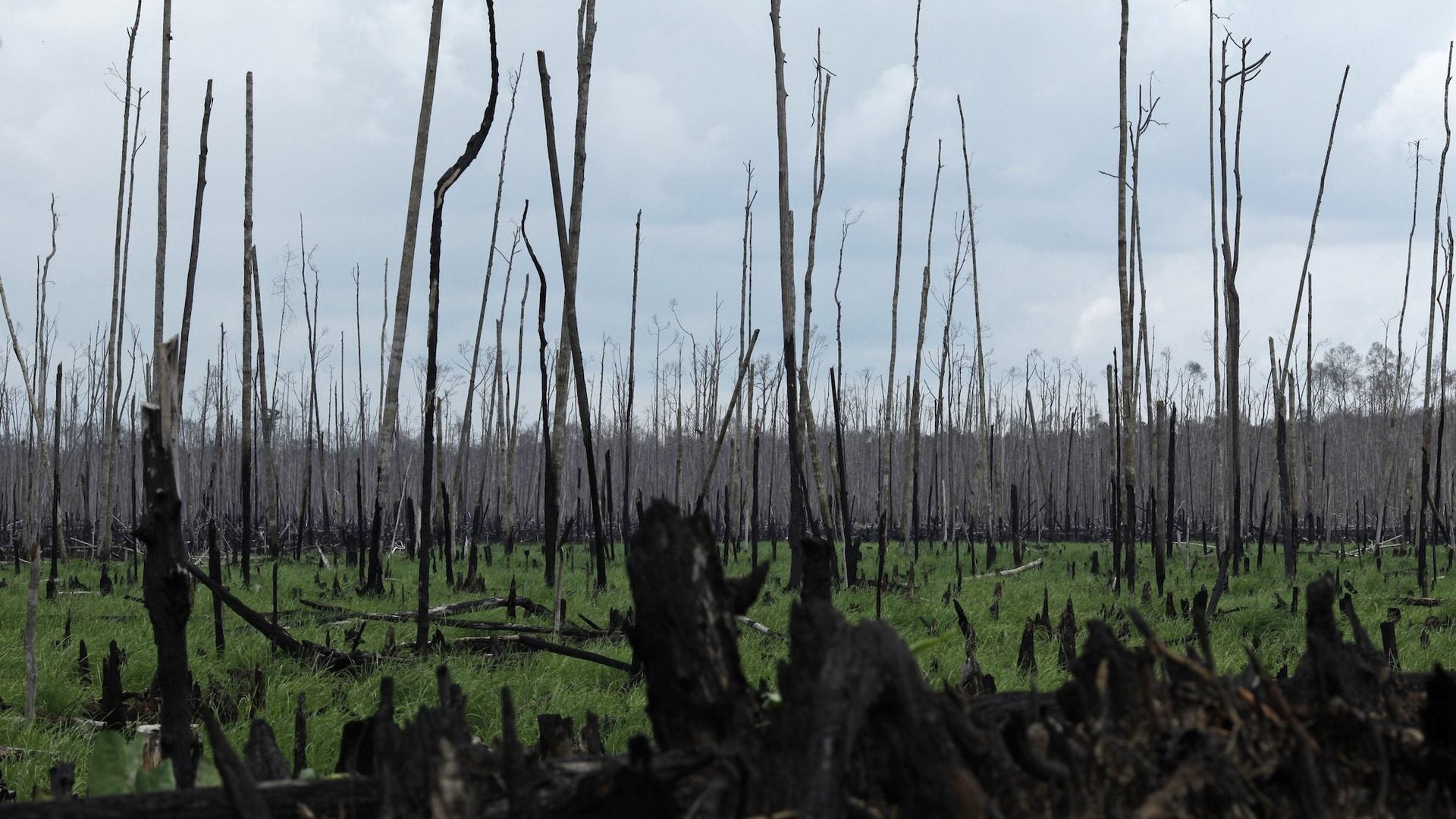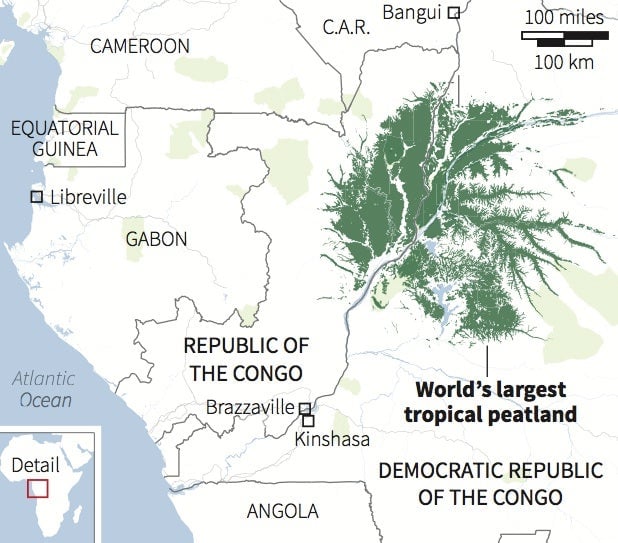A Congo swamp could release the equivalent of 20 years of US greenhouse gas emissions into the air
Scientists have discovered a remote swampland in central Africa that contains the equivalent of 20 years of US greenhouse gas emissions, or three years of the world’s total fossil fuel emissions. The Cuvette Centrale peatlands in the central Congo Basin are home to 30 billion metric tons of carbon dioxide that could be released into the atmosphere if not properly protected, according to a study published in Nature this week.


Scientists have discovered a remote swampland in central Africa that contains the equivalent of 20 years of US greenhouse gas emissions, or three years of the world’s total fossil fuel emissions. The Cuvette Centrale peatlands in the central Congo Basin are home to 30 billion metric tons of carbon dioxide that could be released into the atmosphere if not properly protected, according to a study published in Nature this week.
“These peatlands hold nearly 30% of the world’s tropical peatland carbon,” said Simon Lewis, from the University of Leeds, one the lead authors of the study. The peatlands, which cover 145,500 square kilometers, an area larger than the size of England, acts as a natural carbon sink, pulling carbon from the atmosphere. If it were to dry out, the resulting decomposition of the swamp’s plants would release all that carbon dioxide back into the air. It’s not entirely hypothetical; in Indonesia, peatlands have been drained for agricultural use, and it is believed to have contributed significantly to the country’s overall carbon emissions.
For the past three years, Lewis and his team of British and Congolese researchers have been mapping the Cuvette Centrale peatlands through satellite imagery as well as the old-fashioned way: slogging through them. The peatlands, between the two Congos, fan out into a leaf-like shape and make up the world’s largest tropical peatland.

So far, the Cuvette Centrale peatlands appear undisturbed. There is little development or farming in the area. Still, rising temperatures and decreasing rainfall could cause the peat in the swamplands to dry out. According to the study, recent research suggests declining annual precipitation and more intense dry seasons. And because the peatlands are so newly discovered, they are not part of either country’s conservation plans.
“If the Congo Basin peatland complex was to be destroyed, this would release billions of [metric tons] of carbon dioxide into our atmosphere,” Lewis said.